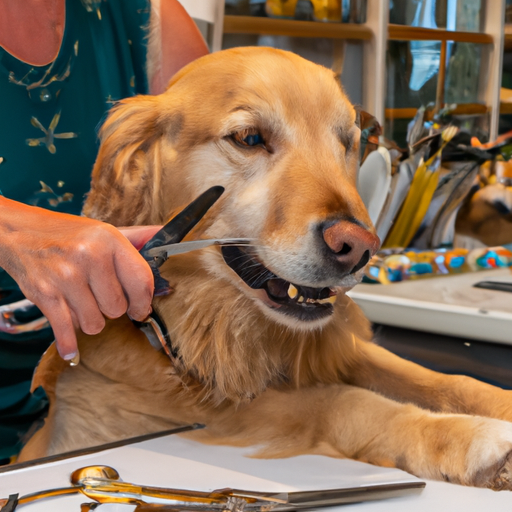Grooming your furry friend is more than just about maintaining their good looks. It also involves ensuring their comfort and health. One crucial aspect of dog grooming is trimming the hair around their face. Not only does this make your dog look neat and tidy, but it also prevents hair from obstructing their vision and causing potential discomfort. But how do you go about this task? This article will guide you through the process of cutting your dog’s face hair like a pro!
Table of Contents
1. Understanding the Importance of Trimming Your Dog’s Face Hair
2. Getting the Right Tools for the Job
3. How to Cut Your Dog’s Face Hair: Step-by-Step
4. Pro Tips for Trimming Your Dog’s Face Hair
5. Addressing Common Concerns: FAQs
Key Takeaways
– Cutting your dog’s face hair is essential for their comfort and health.
– The right tools, including grooming scissors and a comb, are crucial for the task.
– Patience and a gentle hand go a long way in ensuring a successful grooming session.
– Regular grooming keeps your dog looking neat and prevents potential health issues.
Understanding the Importance of Trimming Your Dog’s Face Hair
Proper grooming is essential for a pet’s overall well-being. It’s not just about aesthetics, but also about health and hygiene. When it comes to face grooming, there are several reasons why it’s an important task.
Firstly, long hair around the eyes can cause irritation and even lead to infections. It can also obscure your pet’s vision, which can be distressing for them. Secondly, hair around the mouth can get dirty quickly, especially after meals, leading to bad odor and potential dental issues. Finally, regular trimming helps in early detection of any skin issues or parasites that might be hiding under your pet’s fur. For more insights on the importance of dog grooming, you can check out this article.
Getting the Right Tools for the Job
Before you get started, you’ll need a few essential tools. These include a good pair of grooming scissors, a comb with both wide and fine teeth, and possibly a trimmer if your dog has particularly thick hair. You can find a list of recommended grooming tools here.
How to Cut Your Dog’s Face Hair: Step-by-Step
Now that we’ve covered the basics, let’s dive into the steps involved in cutting your dog’s face hair.
-
Preparation: Start by combing your dog’s face hair to remove any tangles or debris. Make sure to be gentle, especially around the eye area.
-
Trimming the Eye Area: Hold your dog’s head steady with one hand, and with the other, carefully trim the hair that’s obstructing their vision. Make sure not to poke your dog’s eyes with the scissors.
-
Trimming the Mouth Area: Here, you’ll need to be careful not to cut your dog’s whiskers, which are important sensory tools for them. Trim only the hair that’s long enough to interfere with their food or water.
-
Checking Your Work: Once you’re done, comb through your dog’s face hair again and check if you’ve missed any spots.
Pro Tips for Trimming Your Dog’s Face Hair
Here are a few additional tips to make the process smoother:
- Always keep a calm demeanor. Your dog can pick up on your anxiety, which can make them nervous too.
- Use treats to keep your dog still during the process.
- Regular grooming can help your dog get used to the process.
For more tips on grooming, check out this article on One Top Dog.
Addressing Common Concerns: FAQs
Q: How often should I trim my dog’s face hair?
A: This depends on your dog’s breed and rate of hair growth. Typically, once a month is sufficient.
Q: What should I do if I accidentally cut my dog?
A: If this happens, apply a pet-friendly antiseptic to the wound. If it’s a deep cut, consult your vet immediately.
Q: Can I use human hair scissors to cut my dog’s hair?
A: It’s not recommended as human hair scissors may not be sharp enough for dog hair, potentially leading to an uneven cut or even injury.
Remember, careful and regular grooming can make a significant difference in your dog’s comfort and health. If you’re unsure about any part of the grooming process, don’t hesitate to consult a professional groomer or your vet. For further reading, you can check out these articles on One Top Dog and One Top Dog. Happy grooming!



